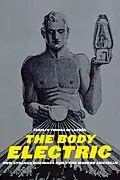Between the years 1850 and 1950, Americans became the leading energy consumers on the planet, expending tremendous physical resources on energy exploration, mental resources on energy exploitation, and monetary resources on energy acquisition. A unique combination of pseudoscientific theories of health and the public's rudimentary understanding of energy created an age in which sources of industrial power seemed capable of curing the physical limitations and ill health that plagued Victorian bodies. Licensed and ?quack? physicians alike promoted machines, electricity, and radium as invigorating cures, veritable ?fountains of youth? that would infuse the body with energy and push out disease and death.
The Body Electric is the first book to place changing ideas about fitness and gender in dialogue with the popular culture of technology. Whether through wearing electric belts, drinking radium water, or lifting mechanized weights, many Americans came to believe that by embracing the nation's rapid march to industrialization, electrification, and ?radiomania,? their bodies would emerge fully powered. Only by uncovering this belief's passions and products, Thomas de la Peña argues, can we fully understand our culture's twentieth-century energy enthusiasm.
Autorentext
Carolyn Thomas de la Peña is Assistant Professor of American Studies at the University of California at Davis.
Inhalt
